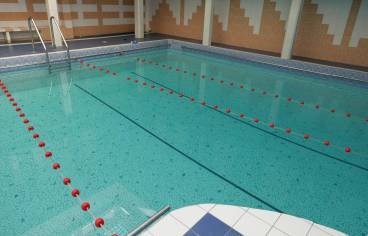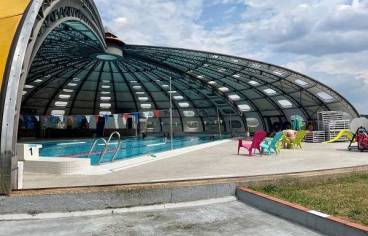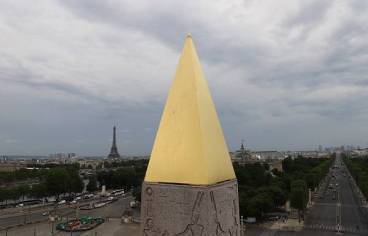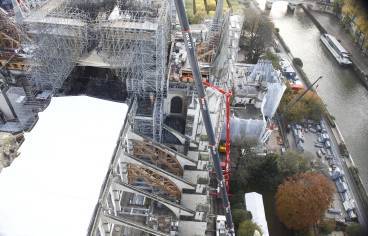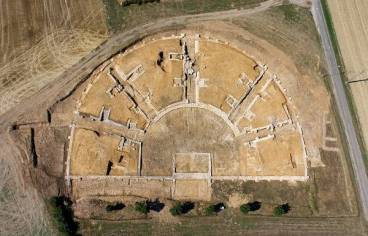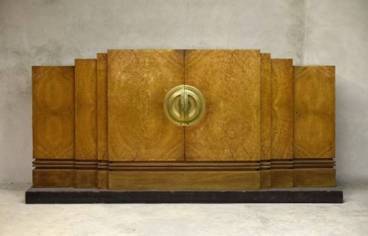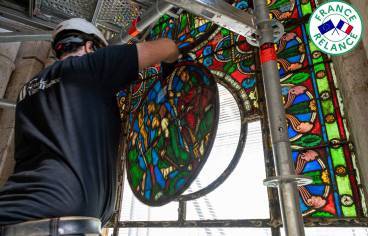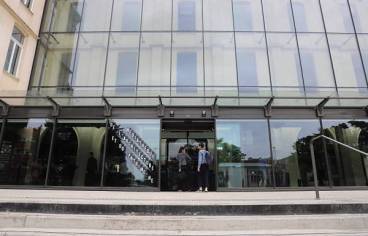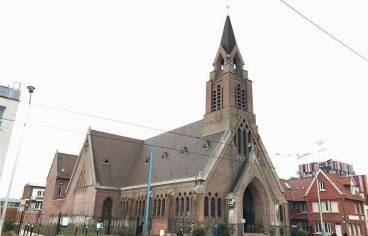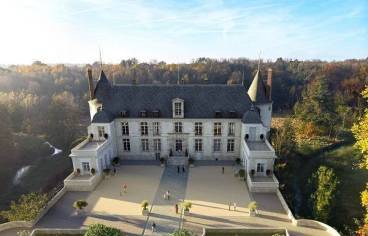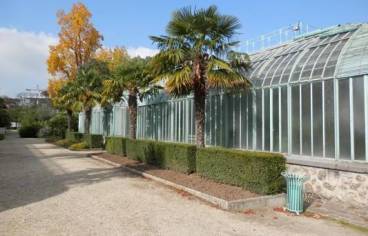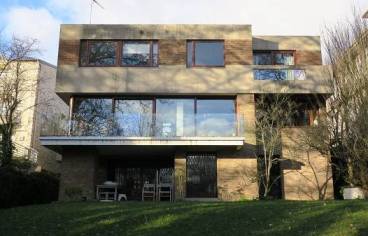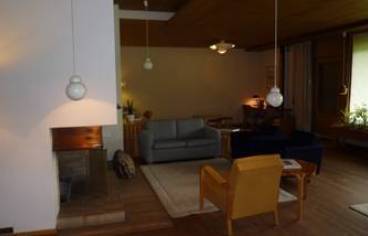Monuments Historiques
La CRMH assure la maîtrise d’ouvrage pour les travaux d’entretien, sous la maîtrise d’œuvre des architectes des bâtiments de France, et pour la restauration sous la maîtrise d’œuvre des architectes en chef des monuments historiques des monuments historiques appartenant à l’État, affectés à la DRAC. Depuis le 1er décembre 2019, les travaux de conservation et de restauration de la cathédrale Notre-Dame de Paris sont confiés à l’établissement public en charge de la reconstruction de Notre-Dame de Paris. La DRAC d’Île-de-France continue toutefois d’assurer la maîtrise d’ouvrage sur les objets mobiliers appartenant à l’État.
Nos missions
Travaux sur un monument historique
Définition du projet
Les services de l’état chargés des monuments historiques, exercent le « contrôle scientifique et technique » des opérations portant sur les monuments historiques classés et inscrits dès la phase préliminaire (définition du projet de programme de travaux) et pendant toute la durée de l'opération.
La DRAC met à disposition du maître d’ouvrage l’état des connaissances dont il dispose et lui précise, en fonction de la nature, de l'importance et de la complexité des travaux envisagés, les études scientifiques et techniques qui devront être réalisées préalablement à la détermination du programme d'opération.
Choix du maître d’œuvre
La DRAC indique les compétences et expériences que devront présenter les architectes candidats à la maîtrise d'œuvre de ces travaux, définies au regard des particularités de la protection du bâtiment et de l'opération.
Le maître d’ouvrage soumet son choix de maître d'œuvre à la DRAC qui doit donner son accord pour tous les travaux de réparation et de restauration menés sur un immeuble classé.
La mission de maîtrise d’œuvre : du diagnostic aux travaux
Avant de déposer une demande d’autorisation de travaux, le maître d'ouvrage transmet au préfet de région le projet de programme accompagné du diagnostic de l'opération.
Autorisation de travaux
Une fois les études achevées, au stade de l'avant-projet définitif, le propriétaire doit adresser le Cerfa de demande d'autorisation de travaux sur un immeuble classé au titre des monuments historiques - régime général et le dossier technique en 4 exemplaires à l’UDAP du département où se trouve l'immeuble.
Cette demande dispense celui qui la présente de formalité au titre du code de l'urbanisme (principalement de permis de construire). Si d'autres législations sont applicables (sites, établissements recevant du public, sécurité, accessibilité des personnes à mobilité réduite, etc.), le propriétaire doit parallèlement adresser ses demandes d'autorisation au titre de ces législations aux autorités compétentes (maire ou préfet selon le cas). L'autorisation de travaux vaut autorisation spéciale au titre du site classé si l'autorité administrative chargée des sites a donné son accord. Les différences de délais d’instruction implique que les deux autorisations sont délivrées séparément.
L'autorisation de travaux sur un immeuble classé est délivrée par la DRAC qui se prononce dans le délai de six mois suivant la date d'enregistrement notifiée au pétitionnaire par l’UDAP. Le délai de gestion démarre à réception du dossier à l’UDAP qui attribue un numéro et fixe la date d’enregistrement. Faute de réponse dans ce délai, l'autorisation est réputée accordée.
A défaut d'une demande de pièces complémentaires dans le mois suivant la réception, le dossier est réputé complet.
L’incomplétude du dossier peut être constatée dans ce délai d’un mois. Le délai d’instruction du dossier courre de nouveau à compter de la réception des pièces demandées.
A défaut de réception des documents dans un délai de deux mois, la demande d’autorisation de travaux fait l'objet d'une décision tacite de rejet.
La décision d'autorisation peut être assortie de prescriptions, de réserves ou de conditions.
La décision prend également en compte les prescriptions éventuellement formulées par l'autorité compétente pour statuer sur les demandes de permis de construire.
L'autorisation de travaux est notifiée au propriétaire par la CRMH. Elle indique le (ou les) agent(s) de la DRAC en charge du contrôle scientifique et technique (CST) en lien avec les ABF, pratique récente à la DRAC Ile de France.
L'autorisation de travaux est périmée si les travaux ne sont pas entrepris dans le délai de trois ans à compter de la notification de la décision ou de la date à laquelle la décision tacite est intervenue. Lorsque le commencement des travaux est subordonné à une autorisation ou à une procédure prévue par une autre législation, ce délai court à compter de la date à laquelle les travaux peuvent commencer en application de cette autre législation si cette date est postérieure à la notification de l’autorisation de travaux. L'autorisation est également périmée si, passé ce délai, les travaux sont interrompus pendant un délai supérieur à une année.
L'autorisation peut être prorogée pour une année, sur demande de son bénéficiaire.
Ces délais sont suspendus en cas de recours contentieux contre l'autorisation.
Travaux sur monuments historiques inscrits
(permis de construire-formulaire CERFA 13409).
Les services chargés des monuments historiques vérifient et garantissent que les interventions sur les immeubles inscrits sont compatibles avec le statut de monument. Ils définissent en fonction des caractéristiques des immeubles inscrits concernés, les conditions scientifiques et techniques selon lesquelles les interventions sont étudiées, conduites (art. R621-64).
Dans le cadre d’un projet de travaux, la documentation est mise à disposition du pétitionnaire et les services de l’État informent le pétitionnaire des contraintes réglementaires, architecturales et techniques que le projet devra respecter.
Le recours à un architecte est rendu obligatoire par le Code de l'urbanisme pour l’établissement du projet.
Le contrôle des services de l’État durant les travaux
Durant le chantier, la DRAC contrôle et vérifie la bonne exécution des travaux qu'elle a autorisé.
Le maître d'ouvrage doit tenir informé les agents de la DRAC identifiés dans la décision d’autorisation de travaux du calendrier des travaux et de leur évolution, des réunions de chantier.
En fin de travaux, le maître d’œuvre établit le dossier d'ouvrages exécutés (DOE) au vu duquel les services de la DRAC (UDAP, CRMH) pourront rédiger le certificat de conformité des travaux au projet autorisé dans le délai de six mois suivant leur achèvement.
Installations temporaires sur immeuble classé.
Les installations ou constructions temporaires d'une surface inférieure à vingt mètres carrés et d'une durée inférieure à un mois, aucune autorisation n’est demandée au titre du code du patrimoine.
Les dossiers d'installations ou de constructions temporaires d'une surface supérieure à vingt mètres carrés et d'une durée entre 1 et 3 mois sont instruits par la DRAC dans le délai d'un mois. Faute de réponse du préfet de région, l'autorisation est réputée accordée.
Les dossiers de mise en place d'installations ou de constructions temporaires d'une surface supérieure à vingt mètres carrés et d'une durée supérieure à trois mois sont instruits dans un délai de 3 mois avec soumission à l’avis des services de l’urbanisme compétents.
Financement des travaux, subventions, hors dispositifs spécifiques.
Le maître d'ouvrage s’assure du financement des travaux qu’il peut répartir sur plusieurs exercices budgétaires.
Il peut solliciter les aides de l’État, des collectivités et éventuellement de fondations ou d'entreprises privées.
Les subventions de l’État n'ont pas de caractère obligatoire. Il est conseillé de faire la demande à l'avance dès qu'est connu le montant prévisionnel de l'opération. Afin d'alléger la charge financière des propriétaires en matière de paiements, des avances d’un montant de 30 % peuvent leur être versées dès le début des travaux.
La subvention est plafonnée au montant notifié dans l'arrêté et ne peut être majorée en cas de dépassement du montant prévisionnel sur lequel elle a été calculée. Le solde de la subvention est versé après l'établissement du certificat de conformité pour les immeubles classés et après le récolement pour les immeubles inscrits.
La demande de subvention figure dans le Cerfa de demande d’autorisation de travaux.
Dans le cas de subventions accordées pour la restauration de monuments historiques ayant fait l’objet d’un affichage publicitaire, les subventions publiques sont calculées après que le montant des recettes perçues au titre de l'affichage a été déduit du montant des travaux éligibles.
Partager la page









